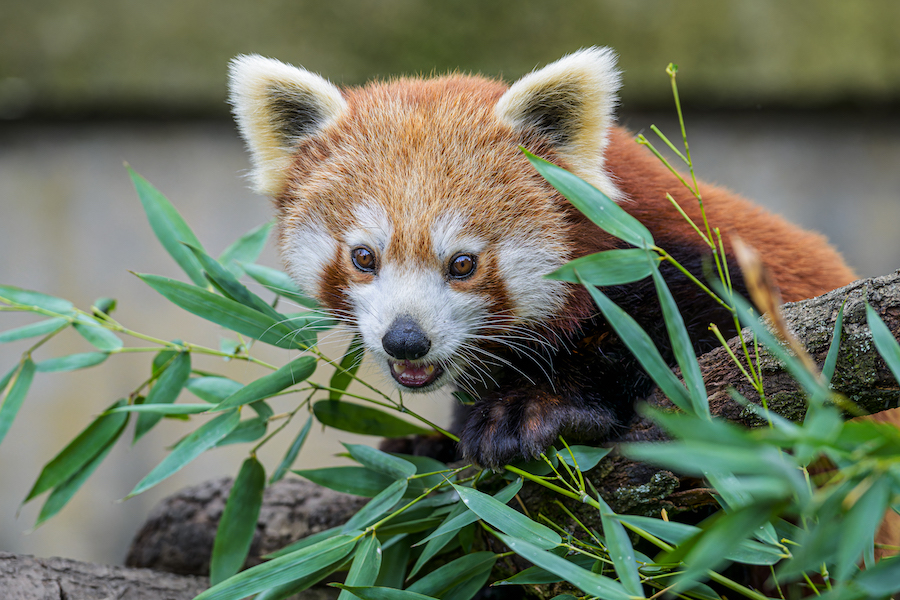
Jerry the red panda male
If somebody says that the red panda is a mysterious animal, I will agree. For instance, already for almost two centuries the proper classification of this carnivore has been debated. Today it is clear, that for sure it is not related to giant panda, but I will get to that later.
In 1825, the zoologist Georges-Frédéric Cuvier – the younger brother of the much more famous Georges Cuvier – described a carnivore species new to the science. He called it Ailurus fulgens, translated from Latin as “shining cat”. In French he then chose the name ʻpandaʼ, by which he ignited future endless debates over the origin of the word. Possibly it was borrowed from a Nepali phrase meaning “bamboo eater”. At the same time, however, he showed considerable erudition when he classified his “shining cat” among racoons.
Across the Channel the Frenchman Cuvier aroused considerable indignation with his classification, as the red panda – an animal from the British zone of interest! – had been already presented to scientific community by the British Major General Thomas Hardwicke. However, he had not published his description, so he was out of luck. On the other hand, it was the British who the first obtained a red panda for a zoo, of course, for the London one. This happened on May 22, 1869. Unfortunately, the British, so sensitive to the fact that they were overtaken by the French, had not read what their fellow compatriot Brian Houghton Hodgson wrote (that pandas in captivity avoided meat and accepted only rice, milk and eggs) and tried to feed their red panda meat. When it was not thriving, the head keeper Bartlett allegedly took it for a walk. There the poor starving panda pounced on rose buds and fruit of ornamental pear trees.
However, in the same year – even before the walk in London Zoo – a Frenchman stepped in again. This time it was the missionary Armand David, who in China had obtained the skin of a large black-and-white carnivore. In his first letter to the naturalist Alphonse Milne-Edwards, he suggested a scientific name Ursus melanoleucus, meaning black-and-white bear. Yes, it was the giant panda, although it was given this name only later.
Although there were glaring as well as less obvious differences between the two Asian bamboo-eating carnivores, their similarities clouded the judgement of many researchers. The most important similarity is that both species have a second “thumb” located on the opposite side of the front paw to the real thumb. In both cases the “panda’s thumb” is created by a sesamoid bone, and it makes eating bamboo easier. Among other things, this match lead to the belief that both pandas were relatives, even very close ones, and David’s black-and-white bear was named ‘panda’. The giant panda.
The mistake linking the red panda and the giant panda as close relatives had remarkably strong roots; it started to fall apart irreversibly only at the turn of the 21st century. There were no doubts that the giant panda is related to bears, but the problem was the red panda. Only genetical analysis demonstrated how close to the truth Georges-Frédéric Cuvier was, when he classified it side by side with racoons. The red panda, which has its own family, belongs today to the superfamily Musteloidea, thus in the company of skunks, weasels, and racoons.
So much for one of the secrets of the red panda. Everything else you can find in our campaign Meet Them! which we launch today together with the new main season. Red pandas are represented in it by the male Jerry.
Caption: The obvious difference between the red panda and the giant panda: The first of them has a long furry tail, while the other one is completely missing this feature.

